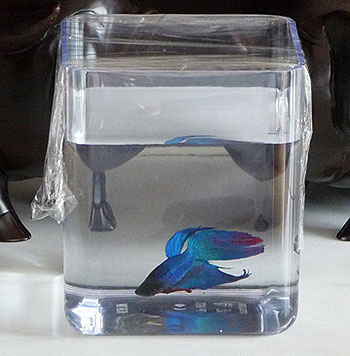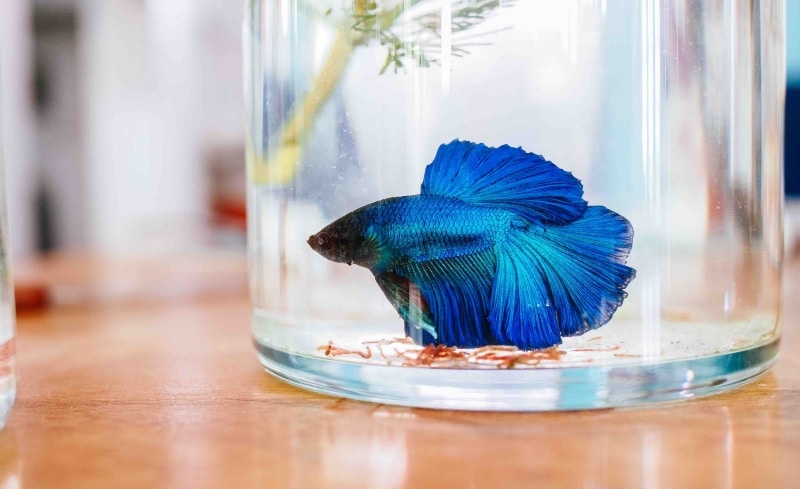The betta fish is known to be an especially sensitive fish. They get easily stressed out during transport. If you know how to transport a betta fish the right way, it should not be stressful for you or your fish. The key is to be mindful of the length of the trip, the tank type, and water conditions.
Transport for Short Travels
There is no need for fancy technology when transporting your betta fish for a short while. If you are transporting one fish for only a couple of hours, plastic bags or zip lock bags will do. Make sure to use at least two plastic bags. Just to be safe, bring extra bags just in case the bags in use break.

You will need to open the bag and change the water every once in a while. When changing the water, pour out half of the water from the plastic bag and gently pour in clean water without agitating the betta. This process oxygenates the water for your fish.
A bigger plastic bag should suffice if you transport a couple or more. If there are a lot of them, you can group the fish and put them in separate bags or small Tupperware. The important thing is to never overstock. Overstocking in an aquarium stresses the fish, even more so in travel.
Transport for Long Travels
So you will have to transport your Betta fish for a couple of days. Plastic bags won’t do the trick this time. You need Tupperware or a clear plastic container, or a low bucket. Avoid tall containers as they can easily tip over and cause a mess.

For travels that will take more than two days, it is best for your fish to be transported in a travel tank. Travel tanks come with clasps that secure the lids. It also has holes to supply air.
You can add a real aquatic plant to the temporary tank if you want. Take a plant or two from the home tank. Remember, though, not to overcrowd the tank.
Whatever tank you choose, always remember to change the water regularly. Ideally, you want to change the water every hour. And give ample swimming space to the fish.
Water Conditions When Transport Betta Fish
When preparing the water for transport, try to imitate the water conditions from the fish’s home tank. Familiar water conditions are essential not to shock your Betta fish. There would be fewer chances of health-failing stress.
You can use half tank water and half clean water for transport. When you change the water, pour out only half of the water and replace it with clean water. This way, the water stays familiar and void of chances to breed bacteria.

Other Reminders to transporting betta fish
There are other things to consider when transporting a Betta fish. Knowing how to transport a betta fish stress-free also includes:
1. Smooth Transport
Rough transport is not only difficult for humans but especially for fish. The water sways and tosses; this can significantly stress your fish as its swimming is disrupted. You can minimize this by cushioning the tank it’s in. Use foam from old clothes. The cushion can also help maintain the water temperature.
2. Temperature
Speaking of temperature, make sure to keep the water temperature warm. Bettas are tropical fish. You have to maintain the water at 77°F – 84°F. Use heating pads if you have to. Place the heating pads between the container and the foam or cloths you will use as cushions.
3. Feed or Fasting
Another thing to remember is the feeding time. Feed your Betta fish while it is in its home tank before transport. Feed it an hour before because it will have to fast during transport. Feeding your Betta fish while in transport increases the chance of ammonia buildup.
4. Post Transport
Congratulations! The transport was successful. But it does not end here. The job is done when it’s back in its home tank. You want the water to be new but the parameters to be the same as before the transport.
Pre-condition the water and add aquarium salt. Wait for the salt to dissolve into the water before transferring your Betta fish. Undissolved aquarium water burns the Betta fish, and no one wants that.
Acclimate the Betta to the new water by floating its bag or container in the new tank for about 15-30 minutes to equalize temperatures. Then, gradually introduce small amounts of the new tank water into the bag or container over another 15-30 minutes. Once acclimated, gently release the Betta into its new home.
Source: ItsAnnaLouise
Last Words
Transporting a betta fish may seem tedious, but it does not have to be stressful. Just choose the right tank, use familiar water and make the transport smooth. Suppose you know how to transport a betta fish properly; the fewer chances of agitating the fish. And the less disturbed the fish, the fewer chances of falling sick.
Be as sensitive as your Betta fish when transporting it. No discomfort is minor. You want your fish to feel relaxed and comfortable. These pointers should guide you for your subsequent transport. Learn more other post on National Park Aquarium.




